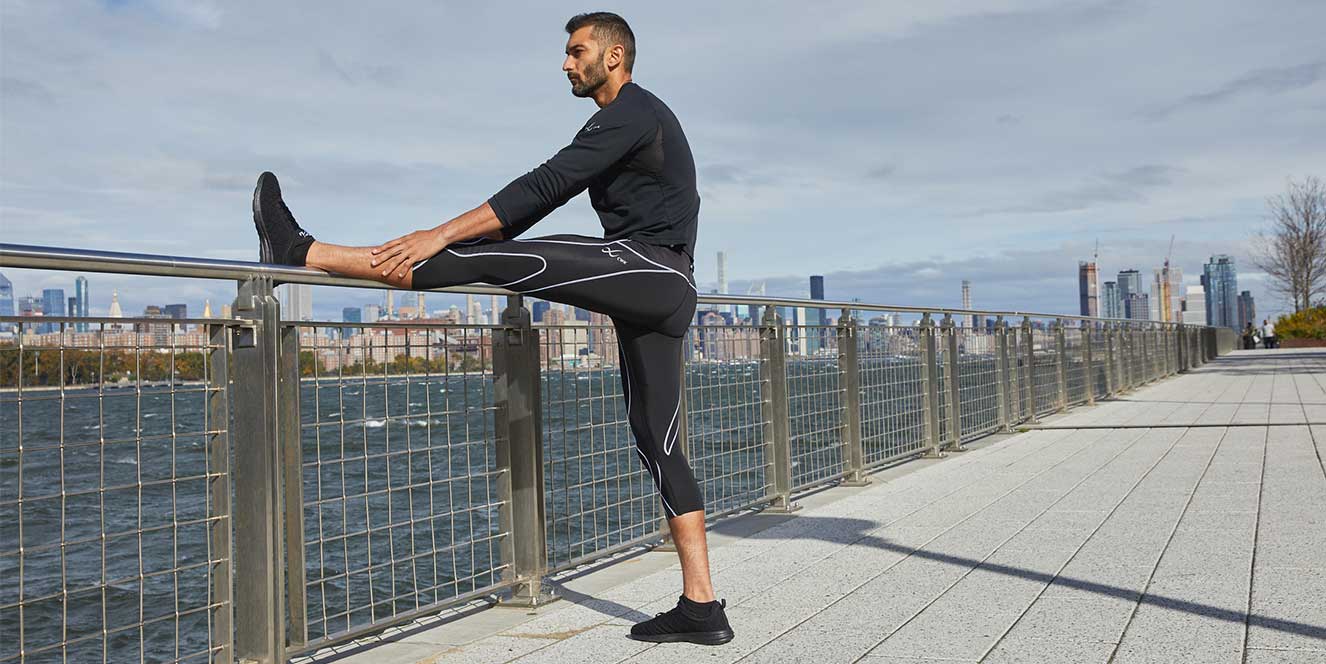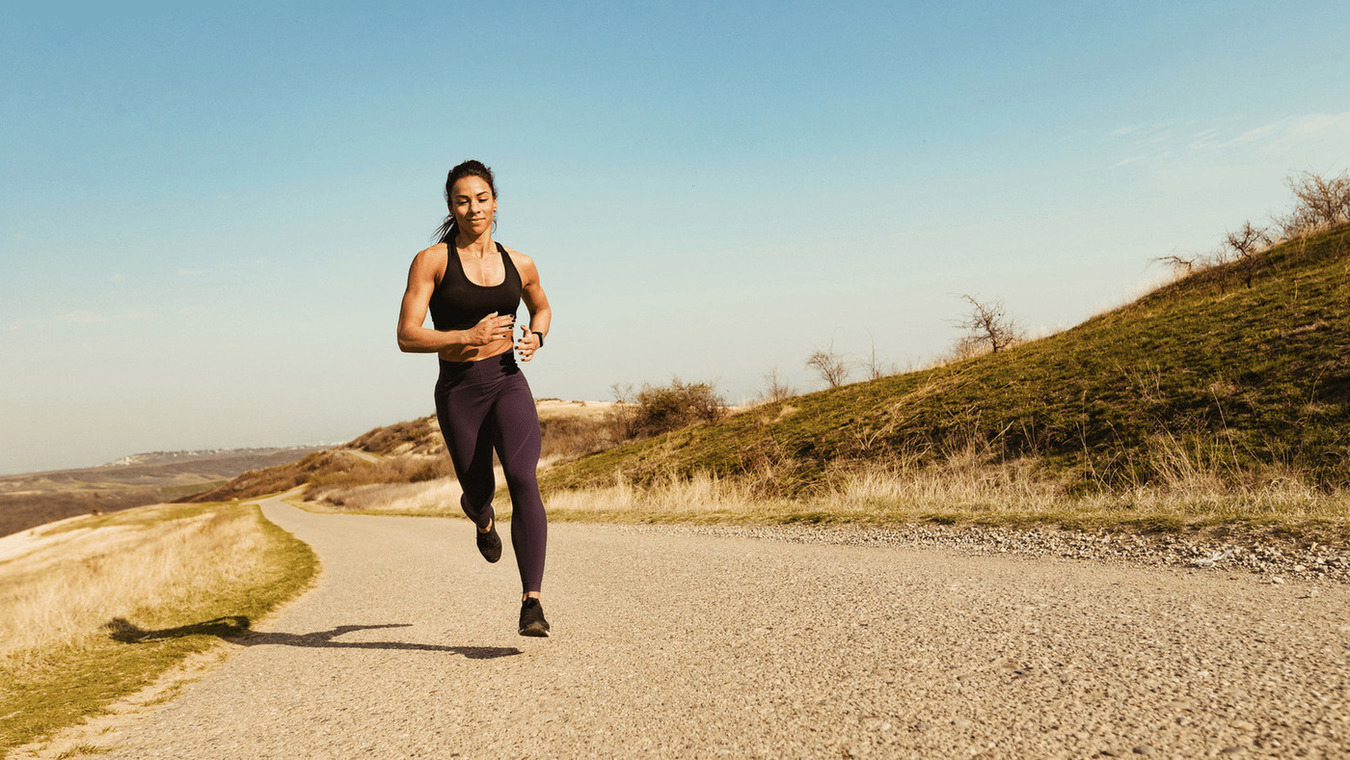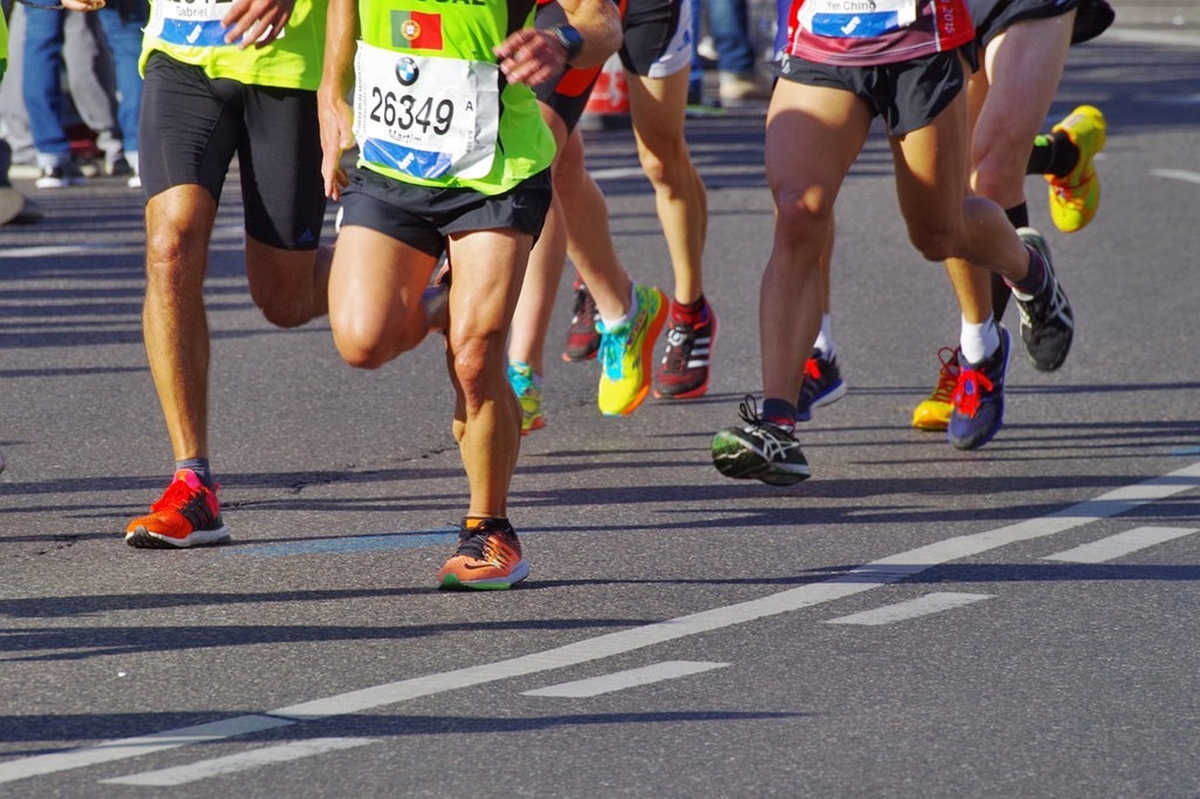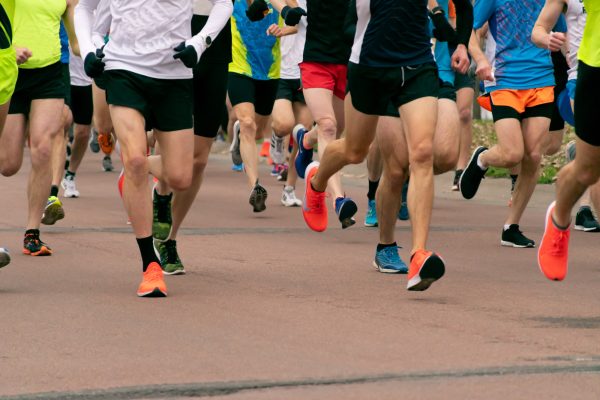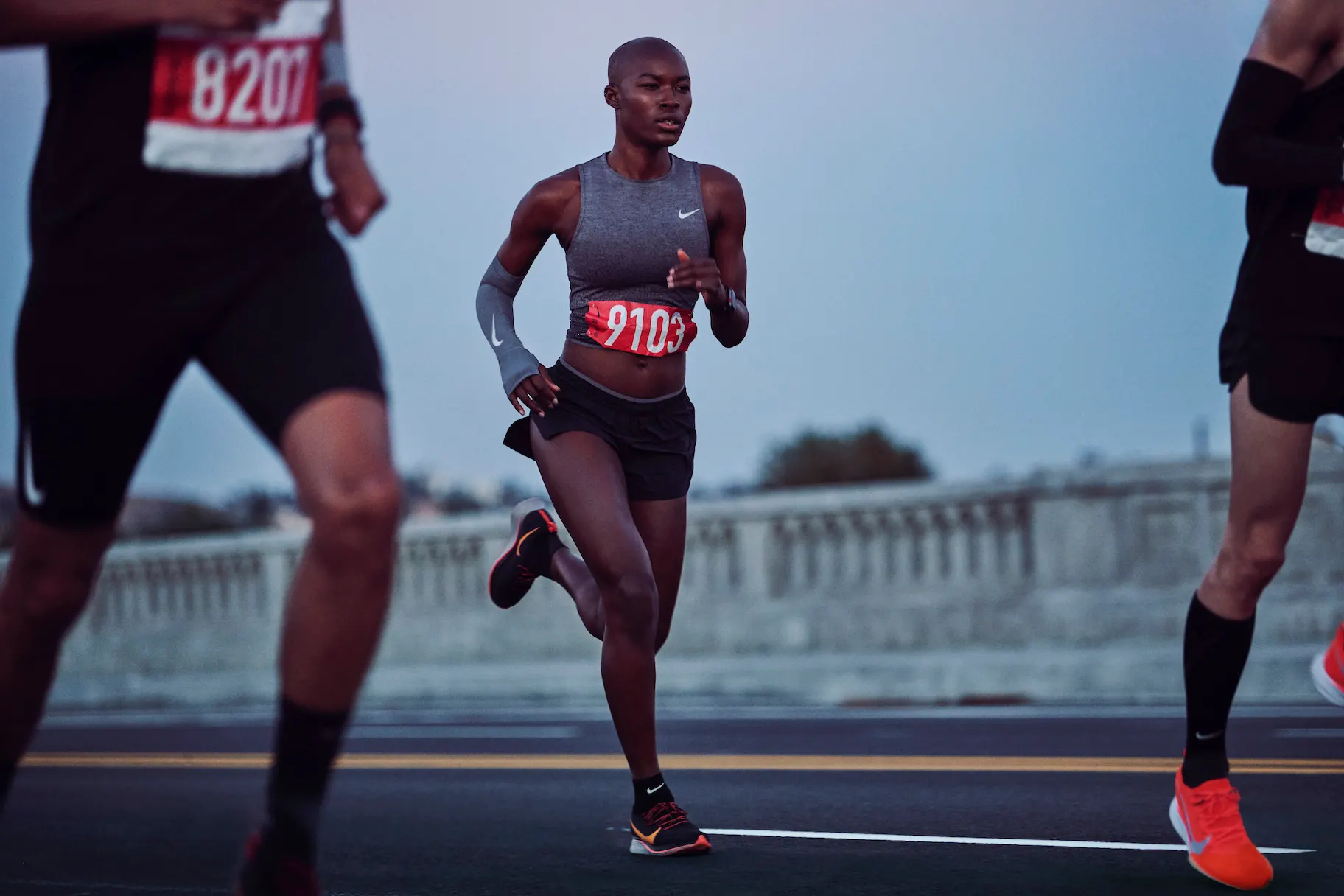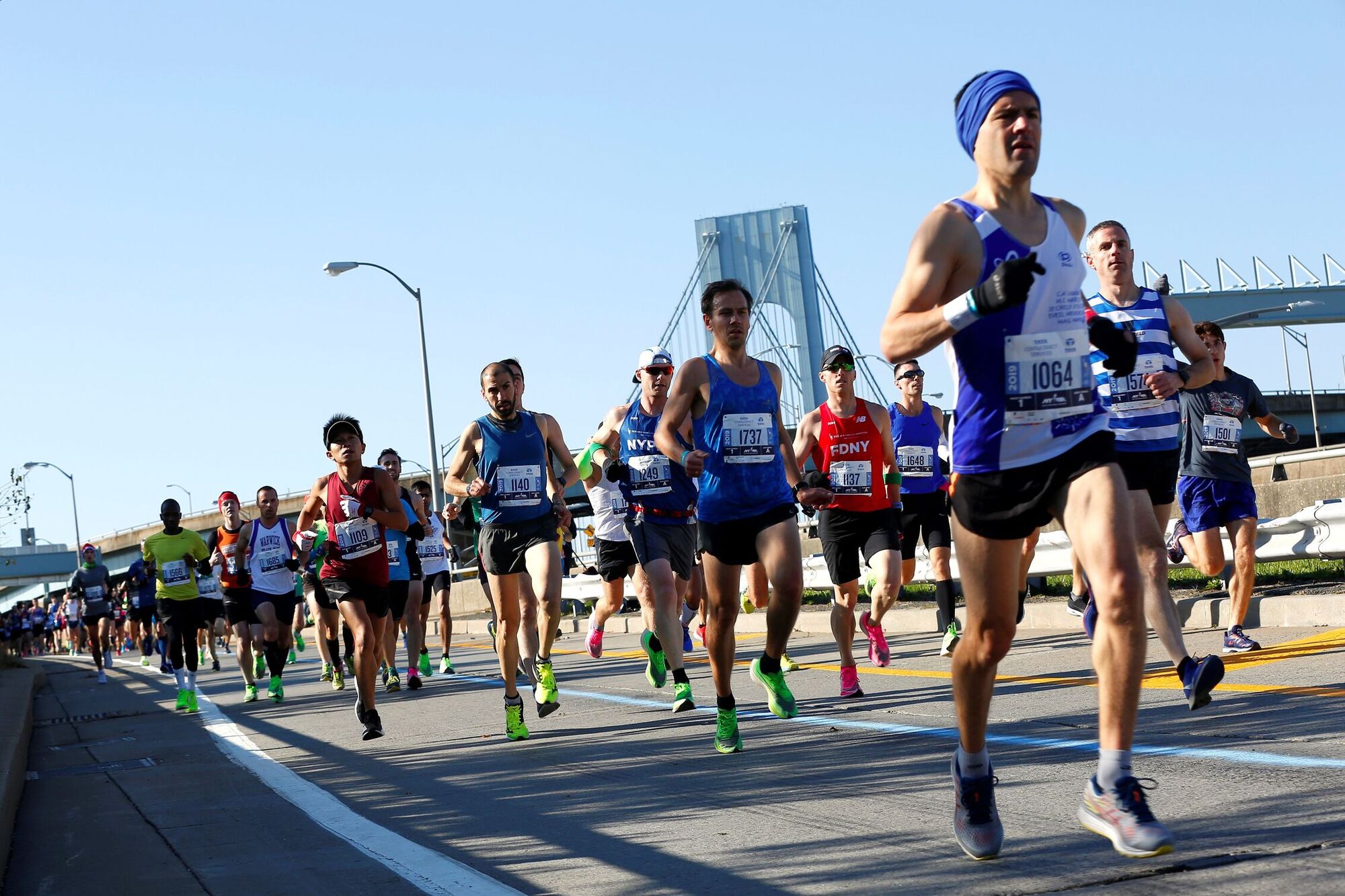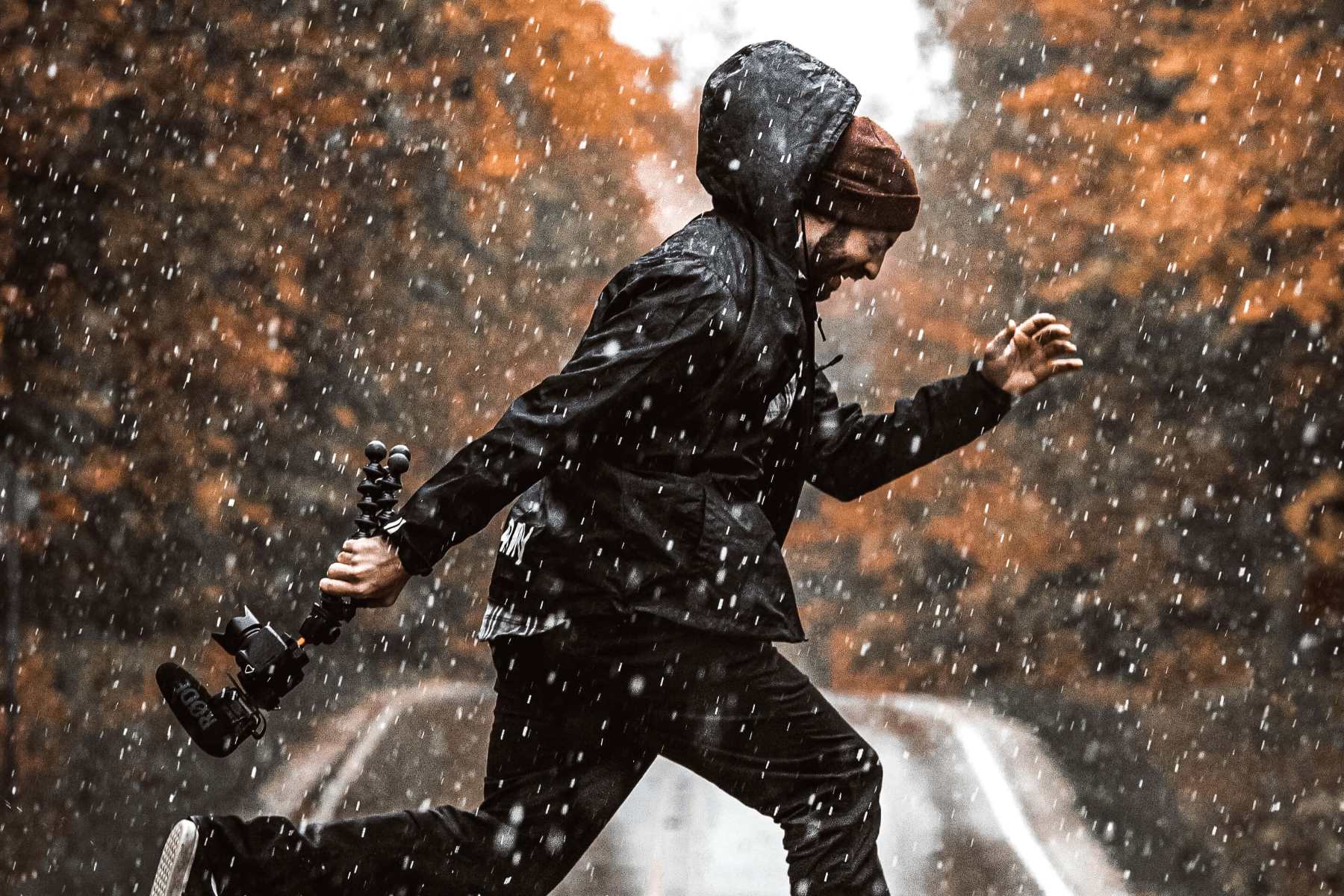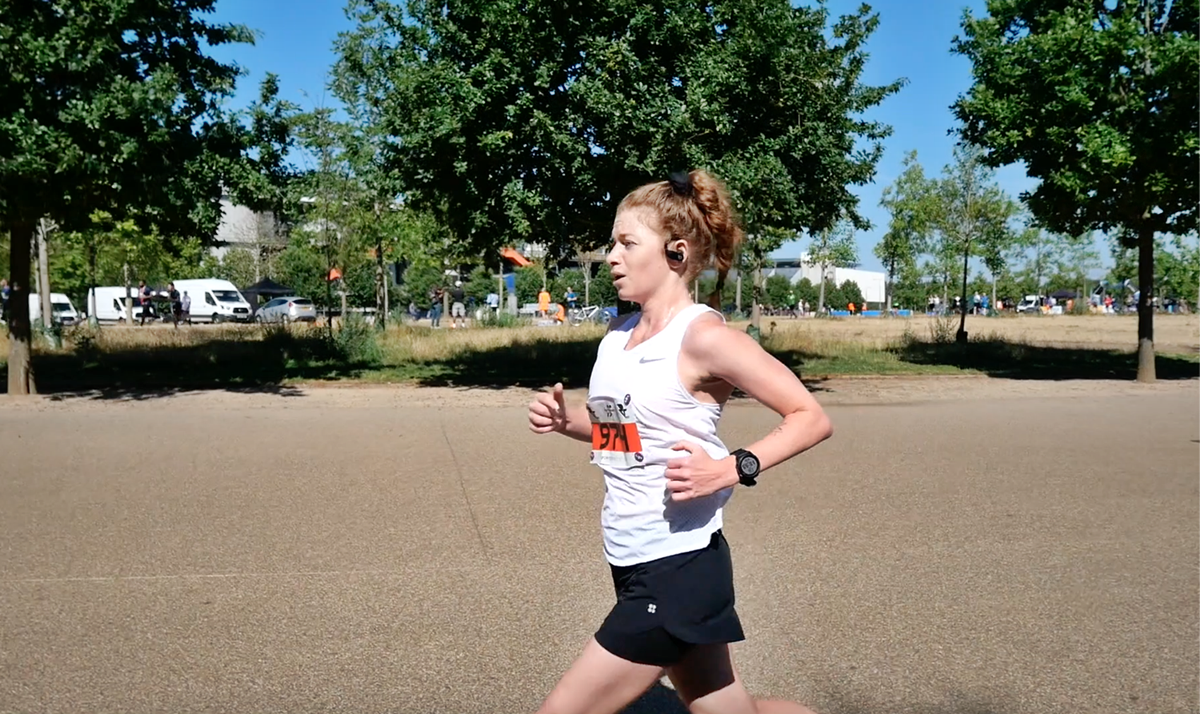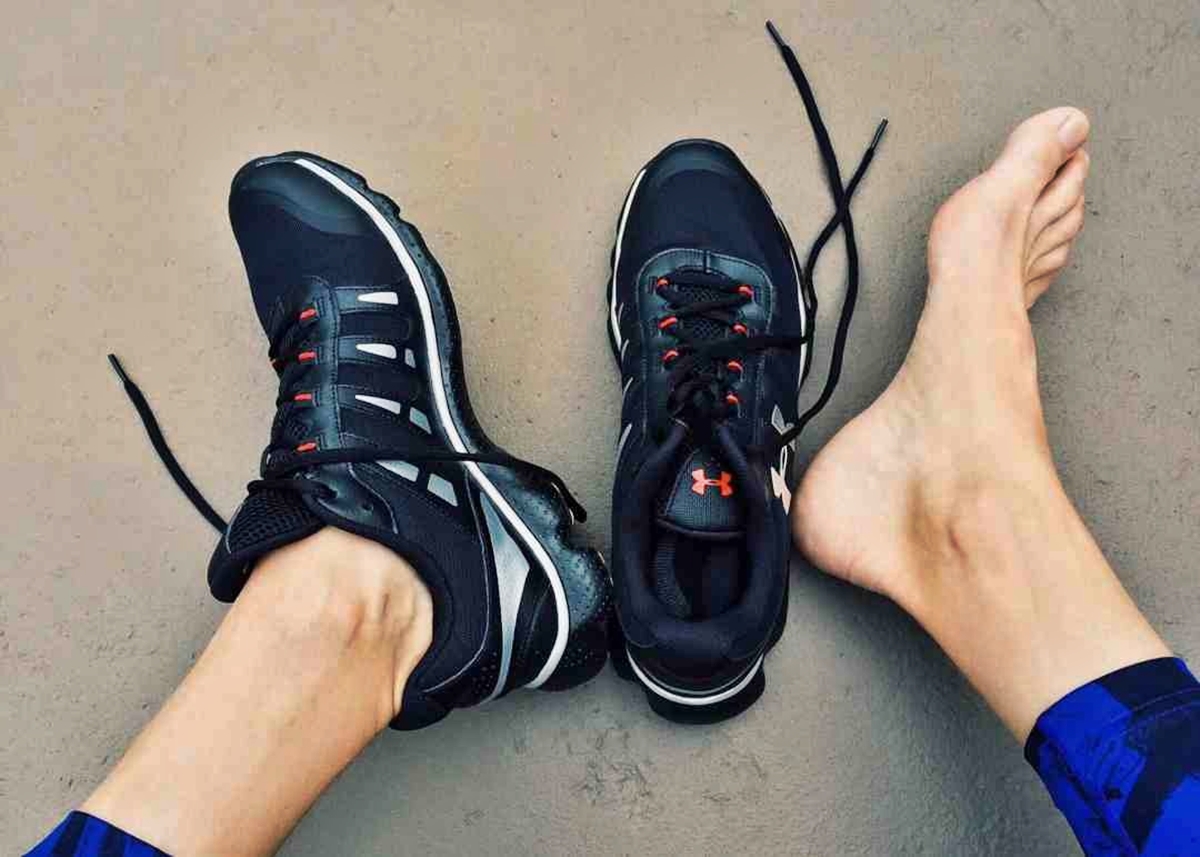Home>Misc>Featured>What Kind Of Socks To Wear For Long Distance Running
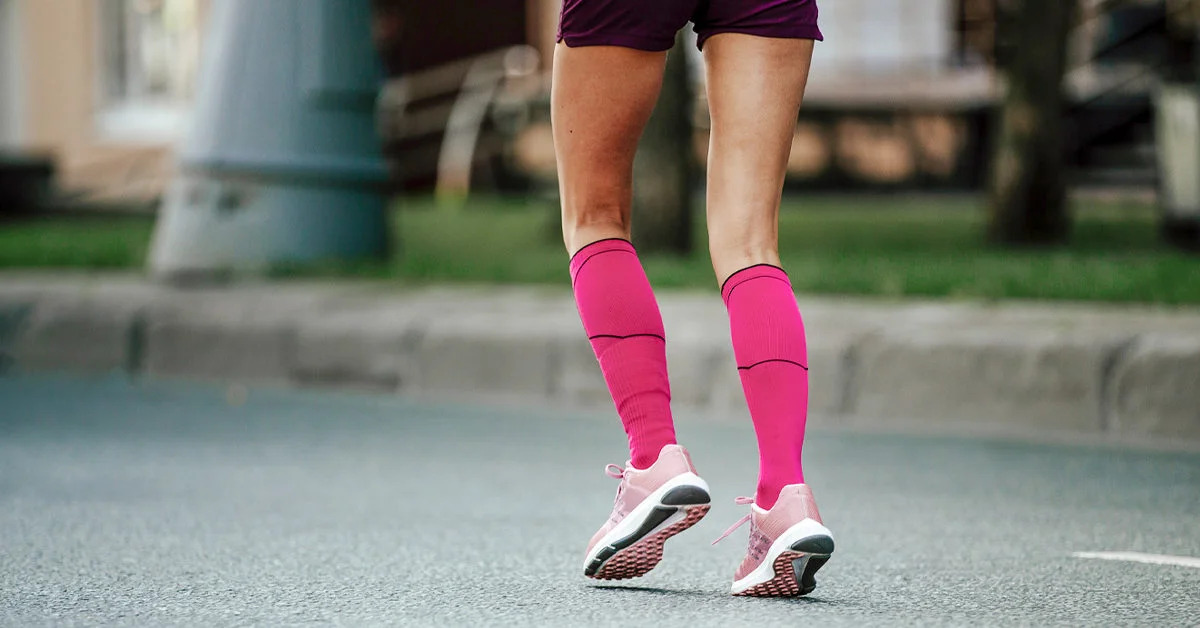

Featured
What Kind Of Socks To Wear For Long Distance Running
Modified: August 22, 2023
Find the perfect socks for your long distance runs. Discover our featured selection of high-performance socks designed for ultimate comfort and durability.
Introduction
When it comes to long-distance running, every detail matters. From a comfortable pair of shoes to the right apparel, runners understand the importance of selecting the best gear for optimal performance. However, one often overlooked aspect of running gear is socks. While it may seem like a minor detail, wearing the right kind of socks can significantly enhance your running experience.
Proper socks for long-distance running play a crucial role in preventing blisters, reducing foot fatigue, and providing overall comfort. They are designed to offer cushioning, support, and moisture-wicking properties, all of which contribute to an enjoyable and successful run. By investing in high-quality running socks, you can protect your feet and ensure that every step of your long-distance run is a comfortable one.
Choosing the right running socks can be daunting, as there are numerous factors to consider. The cushioning, materials, fit, and moisture-wicking abilities all play a role in determining the effectiveness of the socks. In this article, we will delve into the different types of running socks available in the market and provide insights on how to choose the most suitable pair for your long-distance runs.
Whether you are a seasoned marathoner or a beginner tackling your first half-marathon, this guide will help you understand the importance of proper socks and equip you with the knowledge to make an informed choice. So, let’s dive in and explore the world of running socks, and discover how they can greatly enhance your long-distance running experience.
Importance of wearing proper socks for long distance running
When it comes to long distance running, wearing the right socks is not just a matter of comfort, but it can greatly impact your overall performance and prevent potential foot problems. The repetitive motion and impact associated with long distance running can put stress on your feet, making them susceptible to blisters, chafing, and discomfort. This is where proper running socks come into play, providing the necessary cushioning and support to protect your feet throughout your run.
One of the main advantages of wearing proper socks is the prevention of blisters. Blisters are a common problem for runners and can be extremely painful, leading to discomfort and even causing you to cut your run short. Running socks are designed with special features such as padding and seamless construction, which help to reduce friction and minimize the chances of developing blisters. The moisture-wicking properties of these socks also help to keep your feet dry, preventing excessive sweating and reducing the risk of blisters forming due to dampness.
In addition to blister prevention, wearing proper socks can also help reduce foot fatigue during long distance runs. The cushioning provided by running socks absorbs shock and impact, minimizing the stress on your feet and reducing the strain on your muscles and joints. This can contribute to greater comfort and endurance, allowing you to maintain your pace and performance for longer distances.
Proper running socks also offer support and stability to your feet, which is crucial for maintaining proper foot alignment and preventing injuries. The arch support and snug fit of these socks help to keep your feet in the optimal position, reducing the risk of overpronation or supination. This can help prevent common running injuries such as plantar fasciitis, shin splints, and Achilles tendonitis, ensuring that you can stay on track with your training without being sidelined by pain or discomfort.
To sum up, wearing the right socks for long distance running is essential for both comfort and performance. By choosing socks that provide cushioning, support, and moisture-wicking properties, you can minimize the risk of blisters, reduce foot fatigue, and prevent potential injuries. So, don’t underestimate the importance of proper running socks – they can make a world of difference in your long distance running journey.
Factors to consider when choosing running socks
Choosing the right running socks can seem like a daunting task with so many options available on the market. However, understanding a few key factors can help you make an informed decision and find the perfect pair of socks for your long distance runs. Here are some important factors to consider before purchasing running socks:
- Comfort: Comfort should be your top priority when selecting running socks. Look for socks with cushioning in the heel and ball of the foot to provide support and reduce impact. Seamless construction and no-slip features can also enhance comfort and prevent chafing or irritation.
- Fit: Running socks should fit snugly without being too tight. Avoid socks that are too loose or too small, as they can cause friction and discomfort. Consider the sock length as well, whether you prefer ankle socks, crew socks, or knee-high socks based on your personal preference and the weather conditions you will be running in.
- Moisture-wicking properties: Look for socks that are made from moisture-wicking materials such as polyester or merino wool. These fabrics help to pull sweat away from your skin, keeping your feet dry and reducing the chances of blisters forming due to excess moisture.
- Durability: Long distance running can take a toll on your socks, so look for socks that are durable and can withstand regular use and washing. Reinforced toes and heels can enhance the durability of the socks, ensuring that they will last for miles.
- Arch support: Running socks with built-in arch support can provide added stability and help prevent pronation or supination. This feature is especially beneficial for runners with high arches or flat feet.
- Temperature regulation: Consider the climate in which you will be running and choose socks that offer temperature regulation. In hot weather, look for socks with breathable mesh panels to promote ventilation. In colder weather, opt for socks made from insulating materials to keep your feet warm.
By taking these factors into account, you can narrow down your options and find the running socks that best meet your needs and preferences. Keep in mind that everyone’s feet are unique, so it may take some trial and error to find the perfect pair. Don’t be afraid to experiment and try different brands and styles until you find the running socks that provide the ultimate comfort and support for your long distance runs.
Different types of running socks
When it comes to running socks, there is a wide variety of options available to suit different preferences and needs. Here are some of the different types of running socks that you can consider for your long distance runs:
- Ankle socks: Ankle socks, as the name suggests, cover only the ankle and sometimes the Achilles tendon area. They are lightweight and provide minimal coverage, making them ideal for warm weather runs and runners who prefer a minimalist feel.
- Crew socks: Crew socks are slightly longer, typically reaching just below the calf muscle. They provide more coverage and protection compared to ankle socks and are a popular choice among runners who prefer a mid-length sock.
- Knee-high socks: Knee-high socks provide the most coverage and protection, extending up to the knee. These socks are often used by trail runners or runners who prefer additional leg support or protection from debris.
- Toe socks: Toe socks are designed with individual compartments for each toe, resembling a glove for your feet. They offer a more natural toe splay and can help prevent blisters by reducing friction between the toes.
- Compression socks: Compression socks are becoming increasingly popular among runners. They are tight-fitting socks that provide graduated compression, which helps improve blood circulation and reduce muscle fatigue. Compression socks are particularly beneficial for long distance runners, as they can aid in recovery and reduce the risk of swelling and post-run soreness.
- Lightweight running socks: Lightweight running socks are designed to be thin and breathable, perfect for runners who prefer a minimalist feel. They offer minimal cushioning and are ideal for runners who want a sock that feels barely there.
- Medium or cushioned running socks: These socks provide a moderate level of cushioning and support, striking a balance between lightweight and heavily cushioned options. They offer more comfort and protection compared to lightweight socks, making them a popular choice for long distance runners.
- Thick or heavily cushioned running socks: Thick or heavily cushioned socks are designed to provide maximum shock absorption and comfort. They are ideal for runners who prefer extra cushioning and protection, especially for longer distances or on rugged terrain.
- Merino wool socks: Merino wool socks are known for their moisture-wicking and temperature-regulating properties. They help keep your feet cool in hot weather and warm in cold weather, making them a versatile option for year-round running.
The type of running socks you choose depends on factors such as your personal preference, running conditions, and desired level of cushioning and support. It’s important to try different types and see what works best for you. Remember that everyone’s feet are different, so what works for someone else may not necessarily work for you. Don’t be afraid to experiment and find the running socks that provide the perfect combination of comfort, support, and performance for your long distance runs.
Cushioning and padding options for running socks
Cushioning and padding are important features to consider when choosing running socks, as they can greatly impact comfort and protection during your long distance runs. Different types of cushioning and padding options are available to accommodate various preferences and running styles. Here are some common options to look out for:
- No cushioning: Some runners prefer socks that offer minimal to no cushioning. These socks are lightweight and provide a more natural feel, making them suitable for runners who prefer a minimalist experience.
- Light cushioning: Light cushioning provides a thin layer of padding, offering a moderate amount of comfort and protection. They provide just enough cushioning to absorb impact without adding bulk to the sock.
- Medium cushioning: Socks with medium cushioning offer a thicker layer of padding, providing additional comfort and shock absorption. They are suitable for runners who prefer a moderate level of cushioning.
- Thick cushioning: Thick cushioning provides maximum padding and shock absorption. These socks are designed to offer exceptional comfort and protection, making them ideal for long distance runners and those who require extra cushioning on rugged terrains.
- Targeted cushioning: Some running socks feature targeted cushioning in specific areas such as the heel, ball of the foot, or toe area. This helps to provide extra support and protection where it is needed most, reducing the risk of blisters and foot fatigue.
- Seamless construction: Running socks with seamless construction minimize the chances of rubbing and irritation that can lead to blisters. Seamless socks provide a smooth surface that reduces friction and increases overall comfort.
The level of cushioning and padding you choose ultimately depends on your personal preferences and the type of running you plan to engage in. If you prefer a more minimalist feel, you may opt for socks with no or light cushioning. On the other hand, if you value maximum comfort and protection, socks with thick cushioning may be the best choice for your long distance runs.
It’s important to note that the cushioning and padding options may vary across different brands and models of running socks. What one brand considers “light” cushioning may be different from another. Therefore, it’s recommended to try on different socks and see which level of cushioning feels most comfortable for you. Consider factors such as the terrain you will be running on, your foot arches, and any specific foot conditions you may have when deciding on the cushioning and padding options.
By selecting running socks with the appropriate cushioning and padding, you can enhance your comfort and reduce the risk of foot problems during long distance runs. Your socks should provide the right balance of cushioning and support to keep you running strong mile after mile.
Materials used in running socks
The choice of materials used in running socks can greatly impact their performance and comfort. Different materials offer varying degrees of breathability, moisture-wicking capabilities, and durability. Here are some common materials used in running socks:
- Polyester: Polyester is a popular material choice for running socks due to its moisture-wicking properties. It effectively pulls sweat away from the skin, keeping your feet dry and reducing the risk of blisters. Polyester socks are also quick-drying, making them ideal for long distance runs where moisture management is crucial.
- Nylon: Nylon is known for its strength and durability. Socks made from nylon are resistant to wear and tear, making them long-lasting options for runners. Nylon also has good moisture-wicking properties, although it may not be as effective as polyester in this regard.
- Merino wool: Merino wool is a natural fiber known for its temperature-regulating properties. It helps keep your feet warm in cold weather and cool in hot weather, making it a versatile material for running socks. Merino wool is also moisture-wicking and odor-resistant, making it a popular choice among runners looking for natural, sustainable, and comfortable sock options.
- Cotton: While cotton is a common material used in everyday socks, it is not the best choice for running. Cotton retains moisture and does not wick away sweat effectively, which can lead to damp feet and an increased risk of blisters. Avoid cotton socks for long distance running, as they can cause discomfort and increase the likelihood of foot problems.
- Blended materials: Many running socks are made from a blend of different materials to combine their beneficial properties. For example, you may find socks that are a blend of polyester and spandex, offering a combination of moisture-wicking abilities and a snug fit. These blended materials often provide a balance of comfort, durability, and moisture management.
The choice of material for your running socks ultimately depends on your personal preferences and the specific needs of your feet. Consider factors such as the climate you will be running in, your sweat levels, and any sensitivities or allergies you may have. It’s important to prioritize moisture-wicking capabilities to ensure your feet stay dry and comfortable throughout your run.
It’s also worth noting that some running socks incorporate specialized technologies or treatments. For example, certain socks may feature antimicrobial properties to combat odor-causing bacteria, while others may have added compression for increased blood flow and muscle support. These additional features can enhance the overall performance and comfort of the sock, but they may also affect the choice of material used.
Ultimately, choosing the right material for your running socks is a personal preference based on your comfort and performance needs. Consider trying out different materials and blends to find the one that works best for you. When you find a material that keeps your feet dry, comfortable, and blister-free, you are on your way to a more enjoyable long distance running experience.
Fit and sizing of running socks
The fit and sizing of running socks play a crucial role in providing comfort, support, and preventing potential foot problems. Wearing socks that are too tight can restrict blood flow and cause discomfort, while socks that are too loose can lead to friction and blisters. Here are some considerations for finding the right fit and size of running socks:
1. Measure your feet: Start by measuring your feet to determine the appropriate sock size. Measure the length of your foot from the heel to the longest toe, and also measure the circumference of the widest part of your foot. Use these measurements as a reference when selecting sock sizes, as different brands may have slightly different size charts.
2. Follow the brand’s size guide: Each brand may have its own sizing guide, so it’s important to refer to their specific measurements to determine your ideal size. Pay attention to the size ranges provided, and select the size that aligns with your foot measurements. It’s better to go for a slightly larger size if you’re between sizes, as socks that are too small can cause discomfort and restrict circulation.
3. Consider arch support: Look for running socks that offer arch support, especially if you have high arches or require added stability. The sock should comfortably hug your arch without feeling too tight or constricting. This feature can help prevent overpronation or supination and reduce the risk of common running injuries.
4. Seamless construction: Ensure that the running socks you choose have seamless construction in the toe area. Socks with seams can cause friction and irritation, potentially leading to blisters. Seamless socks provide a smooth and comfortable surface, reducing the chances of rubbing against your skin.
5. Snug but not too tight: The fit of running socks should be snug without being overly tight. Socks that are too tight can restrict blood flow and cause discomfort, while socks that are too loose can slide around and lead to friction. Look for socks that provide a close and secure fit without compressing your foot.
6. Consider sock height: The height of the sock is also a matter of personal preference and the running conditions you will be in. Ankle-length socks offer minimal coverage, crew-length socks provide moderate coverage, and knee-high socks offer the most coverage and protection. Consider the weather, terrain, and your own comfort when choosing the height of your running socks.
Finding the right fit and size of running socks may require a bit of trial and error. It’s important to try on different brands and styles to find the ones that fit you best. Remember that your feet can swell during long distance runs, so it’s better to have socks with a slightly looser fit rather than ones that are too tight. With the proper fit and size, you can ensure that your running socks provide the necessary support, comfort, and protection for your feet during your long distance runs.
Moisture-wicking and breathability features in running socks
Moisture-wicking and breathability are crucial features to consider when selecting running socks. Sweaty feet can lead to discomfort, blisters, and an increased risk of fungal infections. The right moisture-wicking and breathability features in running socks can help keep your feet dry, cool, and comfortable throughout your long distance runs. Here’s what to look for:
1. Moisture-wicking capability: The primary function of moisture-wicking socks is to pull sweat away from your skin to the outer surface of the sock, where it can evaporate. Look for running socks made from moisture-wicking materials such as polyester or merino wool. These fabrics are known for their ability to quickly absorb and transfer moisture, keeping your feet dry even during intense workouts.
2. Breathable construction: Breathability in running socks refers to the ability of the fabric to allow air to circulate and cool your feet. Look for socks with mesh panels or strategic ventilation zones, as these features promote airflow and enhance breathability. Breathable socks help to prevent sweat buildup and keep your feet feeling fresh and comfortable throughout your run.
3. Ventilation channels: Some running socks feature built-in ventilation channels that help to increase airflow and improve breathability. These channels are designed to optimize moisture and heat transfer, facilitating quick drying and preventing the buildup of sweat and odor.
4. Strategic cushioning: Look for running socks with strategic cushioning in areas prone to excessive sweat and friction. Padding in the heel and ball of the foot can help absorb impact and reduce moisture buildup. The cushioning should not be overly thick, as this can compromise breathability and increase the chances of overheating.
5. Seamless toe construction: Socks with seamless toe construction minimize friction and reduce the risk of blisters. Seamless socks provide a smooth surface, eliminating any potential points of irritation that can result from friction between the sock and your toes.
6. Anti-odor properties: Some running socks are treated with anti-odor technologies or infused with odor-resistant materials. These features can help combat bacteria growth and keep your socks smelling fresh, even after long distance runs.
By choosing running socks with moisture-wicking and breathability features, you can keep your feet dry, cool, and comfortable during your long distance runs. The ability of the socks to efficiently manage moisture and allow airflow can significantly reduce the chances of blisters, discomfort, and odor. Be sure to consider the climate and intensity of your runs when selecting socks, as these factors can influence the level of moisture-wicking and breathability required. Enjoy a cooler and more comfortable running experience with socks that prioritize moisture management and breathability.
Compression socks for long distance running
Compression socks have gained popularity among long distance runners for their potential benefits in performance, recovery, and overall comfort. These socks, made from elastic materials, provide graduated compression, which means the compression level is strongest at the ankle and gradually decreases towards the calf. Here’s how compression socks can enhance your long distance running experience:
1. Improved circulation: Compression socks work by applying constant pressure on your lower legs, helping to improve blood circulation by facilitating the flow of oxygen-rich blood back to the heart. This increased circulation can enhance your endurance and reduce muscle fatigue during long distance runs.
2. Reduced muscle vibration: The compression provided by these socks helps to stabilize the muscles and reduce micro-movements that can cause muscle vibration. By minimizing muscle oscillation, compression socks can help to prevent muscle damage and reduce muscle soreness, allowing you to recover more quickly after a long run.
3. Increased oxygen delivery: The improved circulation and reduced muscle vibration provided by compression socks result in increased oxygen delivery to the muscles. This can enhance performance and delay the onset of fatigue, allowing you to maintain your running pace for longer periods.
4. Enhanced recovery: Compression socks are not only beneficial during your run but also for post-run recovery. Wearing compression socks after a long distance run can help to reduce muscle soreness, swelling, and inflammation. The graduated compression aids in flushing out metabolic waste products and reducing fluid buildup in the legs, promoting quicker recovery.
5. Support and stability: Compression socks provide additional support and stability to the lower leg and calf muscles. This can be particularly beneficial for runners who have a history of calf strains or Achilles tendonitis. The compression helps to stabilize the muscles and tendons, reducing the risk of injury and providing a sense of confidence during your runs.
6. Temperature regulation: Many compression socks are designed with breathable and moisture-wicking materials, allowing for proper airflow and preventing excessive sweating. This helps to regulate your foot temperature during long distance runs, keeping your feet comfortable and preventing blisters and discomfort caused by excess moisture.
It’s important to note that compression socks may not be suitable for everyone. If you have any pre-existing medical conditions or concerns, it’s advisable to consult with a healthcare professional before incorporating compression socks into your running routine. Additionally, ensure that you select the correct size and fit for the optimal benefits of compression therapy. Improperly fitted compression socks can impede blood circulation and cause discomfort.
Compression socks can be a valuable addition to your long distance running gear, providing support, enhancing circulation, and promoting faster recovery. Experiment with different brands and compression levels to find the socks that work best for you and optimize your running performance and comfort.
Durability and longevity of running socks
When investing in running socks, it is important to consider their durability and longevity. Running socks that are built to last can withstand the rigors of regular use and provide reliable performance throughout your long distance runs. Here are some factors to keep in mind when assessing the durability of running socks:
1. Material quality: The quality of the materials used in the construction of running socks significantly impacts their durability. Look for socks made from durable fibers such as nylon or polyester, which are known for their strength and resistance to wear and tear. Blended materials that combine different fibers can also offer enhanced durability.
2. Reinforced toe and heel: Running socks with reinforced toe and heel areas are designed to withstand the repetitive impact and friction that occur during long distance runs. These reinforced sections provide added durability and prevent premature wear and holes in those high-stress areas of the sock.
3. Construction techniques: The construction techniques employed in making running socks can also contribute to their durability. Look for socks with strong and well-sewn seams, as poorly constructed socks can come apart quickly and may cause discomfort or irritation during your runs.
4. Brand reputation: Consider purchasing running socks from reputable brands known for producing quality products. Brands with a positive reputation often prioritize durability and use premium materials in their sock manufacturing processes.
5. User reviews: Reading user reviews and customer feedback can provide valuable insights into the durability of running socks. Take note of common complaints or praises regarding the longevity of the socks, as this can give you an idea of how well they hold up over time.
To ensure the longevity of your running socks, it’s important to take proper care of them. Follow the manufacturer’s care instructions, which usually involve gentle machine washing and avoiding the use of harsh detergents or fabric softeners. Additionally, avoid exposing your socks to excessive heat or direct sunlight during the drying process, as this can weaken the fibers and affect their durability.
While durability is essential, it’s important to note that running socks will eventually wear out over time, especially with frequent use. As a general guideline, consider replacing your running socks every 300-500 miles or when you notice signs of wear, thinning fabric, or loss of elasticity. Regularly inspect your socks for any signs of damage to ensure that you maintain optimal performance, comfort, and protection during your long distance runs.
Investing in durable running socks may require a slightly higher upfront cost, but it is a worthwhile investment in the long run. By choosing socks with excellent durability and taking good care of them, you can enjoy their benefits for many miles to come.
Proper care and maintenance of running socks
Proper care and maintenance of your running socks are essential to ensure their longevity and optimal performance. By following a few simple steps, you can keep your socks clean, fresh, and in good condition for many runs to come. Here are some tips for caring for your running socks:
1. Follow manufacturer’s instructions: Always check and follow the care instructions provided by the manufacturer. Different sock materials may have specific washing and drying recommendations to maintain their quality and durability. Some socks may require gentle machine washing or handwashing, while others can be washed with regular laundry. Avoid using harsh detergents or fabric softeners that can damage the fibers or affect the moisture-wicking properties.
2. Separate socks by color: Sort your socks before washing to prevent color bleeding. Wash white socks separately from colored ones to maintain their brightness and prevent dye transfer. This will help keep your socks looking fresh and vibrant.
3. Wash inside-out: Turning your running socks inside-out before washing can help preserve the integrity of the fabric and prevent pilling. It also enables the detergent and water to more effectively remove sweat, dirt, and oils from the inside of the sock.
4. Use a mesh laundry bag: Consider placing your running socks in a mesh laundry bag to protect them from snagging or tangling with other garments during the washing process. This extra layer of protection can contribute to the longevity of your socks.
5. Air dry or use a low heat setting: Air drying is the gentlest method for drying your running socks. Hang them up or lay them flat to ensure proper airflow and allow them to naturally dry. If you choose to use a dryer, opt for a low heat setting to prevent excessive shrinkage or damage to the fibers. Avoid exposing your socks to direct heat or sunlight, as this can weaken the fabric and affect their elasticity.
6. Store properly: When not in use, store your running socks in a clean, dry place. Avoid stuffing them in a tight space or leaving them crumpled, as this can lead to creases or misshaping. Storing your socks properly helps maintain their form and prevents unnecessary wear and tear.
Remember to regularly inspect your running socks for signs of wear, thinning fabric, or stretched elastic. If you notice any damage, consider replacing them to ensure optimal performance and comfort during your runs. By following proper care and maintenance practices, you can extend the lifespan of your running socks and enjoy their benefits for many miles.
Conclusion
Choosing the right socks for long distance running is essential for your comfort, performance, and overall enjoyment. From preventing blisters to providing cushioning and support, proper running socks can make a significant difference in your running experience. By considering the various factors such as comfort, fit, moisture-wicking capabilities, and durability, you can find the perfect pair of socks that meet your specific needs.
Look for socks that offer the right level of cushioning and padding, taking into account your personal preferences and the type of terrain you will be running on. Consider the materials used in the socks, such as moisture-wicking fabrics like polyester or merino wool, to keep your feet dry and comfortable. Ensure that the socks fit well, with proper arch support and a snug but not too tight feel.
Compression socks can provide additional benefits for long distance running, including increased circulation, reduced muscle fatigue, and enhanced recovery. However, it’s important to consult a healthcare professional if you have any underlying medical conditions or concerns before incorporating compression socks into your routine.
Proper care and maintenance of your running socks are vital to keep them in optimal condition. Follow the manufacturer’s instructions for washing and drying, separate socks by color, and consider using a mesh laundry bag to protect them. Air drying or using a low heat setting in the dryer can help preserve the quality and durability of the socks.
In conclusion, selecting the right socks for long distance running is an important aspect of your overall running gear. Take the time to consider the factors discussed in this article and try out different types and brands of socks to find the ones that work best for you. Investing in high-quality, properly fitting socks that offer the desired cushioning, support, moisture-wicking capabilities, and durability will ensure that your feet are comfortable and protected during your long distance runs. Happy running!
